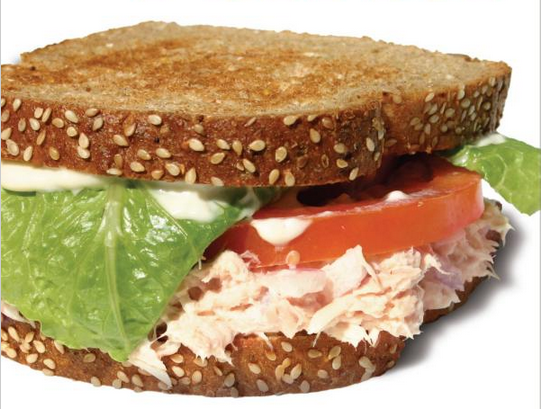Tuna brings to mind many things. I think of the canned product sitting on supermarket shelves and the raw version of the fish used in Japanese cuisine. I also think of mercury health concerns from the consumption of tuna.
Andrew F. Smith, editor of the two series Food and Edible, addresses all these topics and more. While covering the history of tuna, Smith tells us how Japanese fisherman along the California coast were vital to the tuna industry, and why the government encouraged consumption of tuna during World War I. He also tackles the persistent dolphin meat myth, discussing the issue of dolphins killed during the tuna fishing process.
American Tuna is divided into two sections: the first half covers tuna’s ascent from obscurity to popularity. The second addresses the challenges later faced by the American tuna industry. Tuna began with an uphill battle for acceptance: at first, the few Americans who thought to try tuna described it as oily and unappealing. Only after the canning process had been refined to remove most of the oil and lighten the color of the meat did the public conceive tuna to be enjoyable. I found this first part of the book particularly fascinating, as it focused on the underdog rise of tuna. Smith also writes about the origins of the Tuna Club, a sports-fishing organization dedicated to preserving the original rod and reel method of tuna fishing, and covers all the steps from tuna’s unsavory introduction to the American diet to becoming a staple on the American dinner table.
The second half describes the fall of tuna: how the import of foreign tuna threatened the American tuna canning industry, unable to compete with low foreign labor costs. This part of the book focuses on the economic and financial history of tuna, walking readers through the politics of tuna: tuna imports into the United States, the restrictions of American fishing boats in foreign waters, and the government’s involvement with the tuna industry.
Finally, Smith includes a section of tuna recipes. Several were published in cookbooks from the 19th and early 20th centuries. Other recipes come from corporate promotional pamphlets. These instruct the use of a specific brand of tuna in the ingredients, such as Blue Sea Tuna Fish in tuna chowder or Avalon Brand Tuna for tuna loaf.
Smith does a wonderful job of keeping my interest during the first part of the book, depicting the background of the tuna in a story-like form. My attention started to wane in the second section, when it became heavy with the facts and figures of import tariffs and distance restrictions regarding fishing on foreign shores. That said, American Tuna is a great read for anyone who wants to know how a fish that was once undesirable became one of the most popular sandwich fillings in America.
Jane Moon received her MFA in Creative Writing at The New School. She is currently writing her first novel.



Comments are closed.